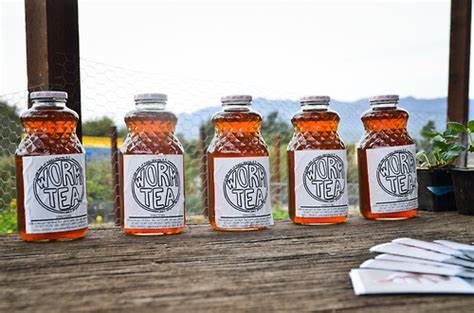The Red Wiggles
- Chef Duane
- Jun 27, 2021
- 3 min read
Updated: Jul 1, 2021

Last year...I had A LOT of time on my hands...Anyway, one thing I did during this time, was try to gain more food knowledge. I ran across a documentary called The Biggest Little Farm. One of the concepts they spoke about, was worm farming. Though my wife thinks I'm country, I had never heard of this. Essentially it works like this, worms digest the scraps and then well..."return it" to you in a format that's now highly dense in nutrients aka worm manure. It's more frequently known as Vermicompost. The worms also produce what is referred to affectionately as "Tea"... let's just say it's not something you want to experience like Tetley or smell with your own nostrils unless you have a spare. It's essentially what sweet tea is to southerners, for plants.
Either way, once I saw how it worked in their farm, I knew we needed to try it on our own. We settled on the Hot Frog Living Composter. However, it seems throughout Covid, many decided to do the exact same thing and none were available when we looked. My genius wife Stace, prayerfully this gets me some points, was able to find a used worm farm through Facebook Marketplace in Brooklyn. She already had an established group of worms as well. So, now we had the worm farm, but we had 3 VERY IMPORTANT decisions to make.
What kind of worms do we get?
What do we feed them?
The most important to me...WHERE DO WE PUT IT?!
To answer the first question, contrary to popular belief, all worms aren't created equal. We found a lot of articles telling us to use Red Wigglers. Evidently, these are like the kings of the compost. They absolutely love decaying organic material. They tend to thrive in rotting compost and manure. So now what? We knew which worm we wanted, but what do worms eat? Can we treat them like essentially a living traditional compost bin? Well, though these guys are known to destroy some scraps in record time, they actually DO have some dietary restrictions. I guess this makes a bit of sense since they don't actually have any teeth. Think of your grand parents forgetting their dentures and crawling around on their bellies...yeah you get the picture lol After I tell you what they can't eat, I wonder how many of you will also try this diet for yourselves lol
So Worm No No's are as follows: Meat, bones, fat, nothing oily or greasy, dairy products, eggs (Shells are ok though), citrus, garlic, onion, spicy foods, salty foods, pineapple, bougie glossy paper you don't want anymore, soap...guess somebody had to try it to know for sure smh, grass, poisonous plants, canned and/or processed foods. See Grandparents! Now there's a whole science of WHICH foods are best and why, but that's a story for another day. So I'll let somebody else tell it.
That brings us to our last and most important question...WHERE DO WE PUT IT?! I had a dream of placing this farm in a nice tucked away corner of not inside our house. In my mind, the fear of the smell of the tea alone was enough for me to say leave em outside lol I mean who honestly wants a bathroom in their kitchen right?? Stace on the other hand...wanted it in our kitchen...like ACTUALLY move the recycling bin and put the worm farm in it's place. Though I did resist, eventually I decided to be happy instead of being right...Now I won't say she was right, but I will admit that since the worms are living and you want them to be active, you have to keep them in an environment that is a certain temperature that isn't necessarily high in humidity, etc. Since we live in the northeast, that rules out outdoors as a year round opportunity.

So far, they've survived so I GUESS it wasn't a bad move. Of course we haven't harvested the tea yet either...so jury is still out. Either way, about 90% of our kitchen scraps and turning produce are now being bio-recycled into useful highly nutrient dense compost for our new garden...and THEE premier garden that is to be within our yet to fully transformed backyard...but that's a story for another day.



"a nice tucked away corner of not inside our house." So funny!
Can't wait to hear how this turns out!